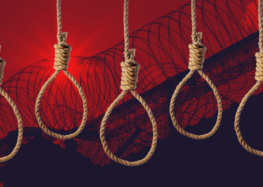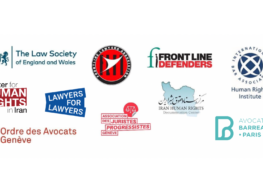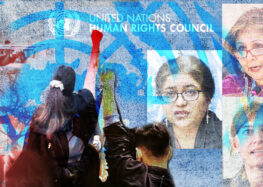A Brief History of “House Arrests” and Detentions in “Safe Houses”: What Will Be the Fate of Disappeared Leaders?
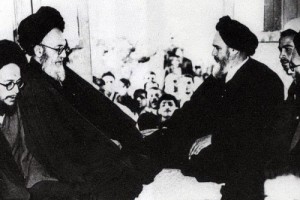 Since 14 February, Iran’s intelligence and security agents have held four prominent opposition figures, Mir Hossein Mousavi, Mehdi Karroubi, Zahra Rahnavard and Fatemeh Karroubi, in incommunicado detention with no confirmation of their whereabouts.
Since 14 February, Iran’s intelligence and security agents have held four prominent opposition figures, Mir Hossein Mousavi, Mehdi Karroubi, Zahra Rahnavard and Fatemeh Karroubi, in incommunicado detention with no confirmation of their whereabouts.
Several Iranian officials have insisted they are in their homes and under “house arrest.” However, credible reports indicate that they have been moved to a “safe house” or a secret detention center, possibly at Heshmatieh garrison in Tehran.
Regardless of the location of the detentions, authorities are violating the due process rights of the detainees as they are being held, for weeks now, without formal arrest or charge, and without access to their families and lawyers. Under international law, the detention of the four opposition figures amounts to an “enforced disappearance.”
This briefing paper provides a review of the “house arrest,” or detention in a “safe house,” of other prominent critics of the Islamic Republic during the past three decades. This history indicates that the majority of prominent persons thus detained were subjected to physical and psychological torture, and forced to make false confessions aired on state-controlled television, and that many of them died following lengthy detentions, and some were murdered.
What is currently happening to the four disappeared opposition figures is cause for great concern regarding their safety and well-being in light of this history of torture, murder, and isolation of opponents in the Islamic Republic of Iran.
House arrest: a method for silencing the political dissidents
Over the past 32 years, Iranian security forces have widely relied on “house arrests,” detention in a “safe houses,” or in a “secret prison,” of prominent opponents who enjoy a wide social base, or who enjoy religious or partisan backing.
Prominent Shi’a clerics who were suppressed during the first decade of the Islamic Revolution include: Ayatollah Kazem Shariatmadari, Ayatollah Montazeri, Ayatollah Sadegh Rohani, Seyed Hassan Ghomi, Seyed Mohammad Rohani, and Seyed Mohammad Shirazi, all high-ranking clerics who had many followers in their capacity as mara’je (Sources of Emulation, the highest Shi’a religious rank).
In the summer of 2000, Mohammad Niazi, Head of the Armed Forces Judicial Organization, admitted the existence of “safe houses” belonging to intelligence agents under the command of Saeed Emami in Tehran. Emami led a team of intelligence operatives who murdered four prominent intellectuals in 1998, in what came to be known as “the chain murders.”
Niazi told the Islamic Republic News Agency (IRNA) that Emami, a deputy to the Intelligence Minister, and other officers of the Ministry had several “safe houses” all around Tehran. The houses, he said, were used for the detention and imprisonment of dissidents, and for meetings in which decisions were made during various stages of the chain murders of intellectuals.
Reviewing the evidence and examples of “house arrest” and “detention inside safe houses” in Iran, it becomes evident that Islamic Republic rulers have taken advantage of these methods for cracking down on critics and dissidents. But while the two methods share many similarities, their implementation and objectives differ.
The previous examples of “house arrest,” used mostly in the cases of high-ranking rival, dissident, or opposition clerics, demonstrate that in the “house arrest” method, creating limitations, severe security control measures, and the presence of security forces in the area surrounding the individual, aim to reduce his effectiveness in the society and among his supporters in the short run, and isolation and death in the long run.
But in the case of “detention inside a safe house,” the victims are completely under the control of security and intelligence organizations and their holding locations are secret. Additionally, “safe houses” are used for breaking the spirit and will of individuals, through sever psychological manipulation and physical abuse. In all previous cases, intelligence agents have focused on obtaining “confession letters” or “video-taped confessions.” Public airing of such “confessions” aims to destroy the social and political base of the leading dissidents. Release from a “safe house” is directly related to the degree the detainee is coerced into cooperation. Lack of cooperation, such as in the case of Saeedi Sirjani (reviewed below) can lead to death following torture.
The Historical Precedent
Ayatollah Seyed Mohammad Kazem Shariatmadari: From house arrest to death

Ayatollah Shariatmadari(left) with Ayatollah Khomeini
Grand Ayaollah Seyed Mohammad Kazem Shariatmadari was a prominent Shia marj’a since the 1960s. Following the arrest of Ayatollah Khomeini on 5 June 1963, and while the Shah’s supporters were suggesting Khomeini’s prosecution and execution, Shariatmadari came to Tehran from Qom and saved Khomein’s life by declaring him a marj’a. Shariatmadari campaigned among other top clerics and mara’je to introduce Ayatollah Khomeini as a marj’a, saving him from eminent prosecution and execution.
After the Islamic Revolution, supporters of Ayatollah Shariatmadari formed their own political party, the “Muslim People’s Party.” Ayatollah Shariatmadari supported the formation of the Islamic Republic of Iran during the 1 April 1979 referendum. However, during the drafting of the new Constitution, he opposed Article 110, which bestows special political-military and ruling authorities upon the Supreme Leader, Vali-e Faqih. This made him a target of intelligence agents who sought to silence and eliminate him from the social and political arenas.
The wide social base of Ayatollah Shariatmadari, especially in Eastern and Western Azerbaijan, Mashad, and Tehran led his supporters to protest the attacks against him by those close to Ayatollah Khomeini in December 1979 and January 1980. They took to streets to demonstrate in Tabriz and other Azerbaijan cities, even taking control of Tabriz’s radio and television for a short time, and simultaneously holding protests in Tehran, Qom, and Mashad.
Protests by Shariatmadari’s followers and members of the Muslim People’s Party were suppressed by IRGC (Revolutionary Guard) forces, and Ayatollah Shariatmadari was put under house arrest. Later, Shariatmadadari’s detention was tied into the arrest of Sadegh Ghotbzadeh, a politician close to Ayatollah Khomeini, charged with the “intent to carry out a coup d’etat.” This accusation led to increased restrictions on Ayatollah Shariatmadari, and all his communications were cut off.
On 2 May 1982, the state television aired statements by Ayatollah Shariatmadari during which he “confessed” to knowledge of a coup d’etat against the Islamic Republic. Later, similar “confessions” of several members of his administration and family were also broadcast.
But broadcasting these confessions did not satisfy the heads of the Islamic Republic. In the end, after multiple visits from Mohammad Mohammadi Reyshahri, the sitting Minister of Intelligence during Ayatollah Shariatmadari’s house arrest, another video was recorded of his “confessions.” This time, the prominent marj’a “confessed” to not just having “knowledge” of the coup, but also actively supporting and financing it.
Ayatollah Shariatmadari was never freed from incommunicado house arrest and authorities reported his death in April 1986, claiming it was due to “kidney failure.” Shariatmadari’s body, in violation of his written will, was secretly moved to Qom and buried under the shroud of darkness at Qom’s Abuhossein Cemetary.
Following Shariatmadai’s death, Grand Ayatollah Golpayegani, in a letter addressed to Ayatollah Khomeini wrote, “[the justness of ] what transpired between you and Ayatollah Shaiatmadari is to be determined by mighty God and history, … Now that the sad news of his passing has been published, I deem it necessary to express my condolences and regret at lack of proper respects and burial rites and the fact that it was carried in secret and in an improper location. I expect that you would personally manage the insults made on him and the position of marja’iat to the extent possible.” (Appendix 72, Memoirs of Ayatollah Montazeri, Volume 2, page 928, Link)
In his memoir, Ayatollah Montazeri wrote that he had confirmed that the coup plot tied to Ayatollah Shariatmadari was untrue and it was concocted for justifying his persecution and house. (Link to Ayatollah Montazeri’s Memoirs)
Toudeh Party leaders: From detention center to safe house

Noureddin Kianouri
During the months of February to May 1982, several members of the communist Tudeh Party’s Central Council were arrested. Mohammad Ali Amooee, Mahmoud Etemadzadeh (Behazin), Noureddin Kianouri, and his wife, Maryam Firooz, and Ehsan Tabari were some of those top leaders of the party arrested. After his forced confessions were broadcast, Captain Afzali, who was the Commander of the Iranian Navy until he was arrested in this connection, was executed in December 1982.
After Ayatollah Khamenei became the Supreme Leader, in a letter dated 5 August 1989 addressed to Khamanei, Noureddin Kianouri detailed the conditions of his arrest, torture, and the forced confessions extracted from him and his family. In another letter addressed to the Leader of the Islamic Republic, dated 5 February 1987, he wrote: “Since my friends and I are supposed to rot in this lonely place, I decided to at least lighten my burden by writing about what has happened to us. Maybe this letter would positively impact the fate of those who will face similar arrests in the future.”
In this letter, Kianouri explains his arrest for Ayatollah Khamenei. “Very early in the morning on 7 January 1983, between 3:30 and 4:00 a.m., a group of Revolutionary Guards agents broke into my daughter’s house and stormed our bedroom and ordered me to immediately put on my clothes. The gentlemen only held my arrest warrant. But in addition to me, they also arrested my wife without a warrant. They didn’t stop there and arrested our daughter who had absolutely nothing to do with our political activities, also without a warrant. Don’t imagine that they stopped there, no! They also arrested our 11-year-old grandchild. They took all of us to Detention Center 3000, which used to be the Shah era Joint Committee Prison, in which I had been detained, prosecuted and imprisoned for a long time (before the 1953 coup). After our daughter, Afsaneh was released (following torture and eighteen months’ detention without any conviction), it turned out that the gentlemen who arrested us had looted our home in our absence.”
Kianouri described all this as the “prelude” to his “detention,” and added “henceforth, the painful show started and unfolded scene-by-scene.”
Describing the torture inflicted “on most of the detainees from that very first day of arrest” and on himself, he wrote to Ayatollah Khamenei: “A few days after our detention, torture, in its fullest meaning, began with the modern name of ‘ta’zeer’ [meaning punishment].” He described how he and his wife, both over the age of 68, had been tortured, and told Ayatollah Khamenei that 11 members and leaders of the Toudeh Party had been killed during the same tortures.
Other Toudeh Party leaders were sentenced to executions and long prison terms, and some of them, like Noureddin Kianouri and his wife Maryam Firouz, were transferred from prison to a “safe house,” where they were kept until they died in 1999.
Murdered in a safe house: Saeedi Sirjani
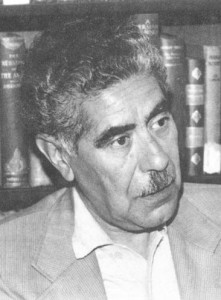
Saeedi Sirjani
Ali Akbar Saeedi Sirjani, an Iranian researcher and author, emigrated from Iran after the revolution. In the early 1990s, following mediation by Iranian author Kiomars Saberi, a.k.a.Gol Agha, with Ayatollah Khamenei, Saeedi Sirjani returned to Iran. But some time later, protesting a ban on the publication of his books, he wrote a private critical letter to Ayatollah Khamenei. Following media attacks on him, and after he received a harsh letter from Ali Khamenei himself, which he had sent him through Kiomars Saberi, Sirjani wrote his second letter of protest to Ayatollah Khamenei on 30 October 1992.
Though Ali Khamenei’s letter to Saeedi Sirjani was never published, Saeedi Sirjani’s critical reply indicates that the Leader of the Islamic Republic had accused the author of apostasy.
“Your Excellency Mr. Khamenei, Mr. Saberi read me your chiding letter and it made me sorry, not because I had made you angry and soon the ever-present Hezbollah ummah will be taking care of me, as death on the road to defend justice is martyrdom, and I have asked God to die a martyr’s death. My regret and sadness is about my own void opinions and lost hopes about Your Excellency’s generosity and the fate the Iranian nation will have during your leadership. I will ignore the insulting tone of the letter that even had the messenger embarrassed, and would have been unexpected of any virtuous Muslim, let alone the Leader of the World’s Muslims. I am shocked about which evidence and example you used for considering me an apostate and a non-believer in Islam,” he wrote in his letter.
The last paragraph in Saeedi Sirjani’s 30 October 1992 letter is where he foretells his punishment as “death” for writing a critical letter to Ali Khamenei . “I am a human being; I am free, and my reason is this letter which serves as shooting orders, or drinking the chalice of hemlock. Let the people of the future know that in the terror-infested land of Iran, there were people who bravely gave up their lives and went to welcome death valiantly.”
After writing this letter, Saeedi Sirjani was put under more pressure than before, to the point where pressure groups held demonstrations against him and media close to intelligence circles called Saeedi Sirjani “the second Salman Rushdie.”
On 14 March 1993, Ministry of Intelligence agents detained Ali Akbar Saeedi Sirjani and transferred him to a “safe house.” His first charges were announced as “possession of pornography,” “possession of drugs and alcoholic beverages,” and later, the Ministry of Intelligence, under then Minister Ali Fallahian, charged the writer with “receiving funding from anti-revolutionaries,” “membership in a drug network,” and even “sodomy.” On 25 November 1993, nine months after his arrest and without having ever been able to have any visits with his lawyer or his family, Saeedi Sirjani was murdered by his captors.
Faraj Sarkouhi’s letter and detention in a “Safe House”

Faraj Sarkouhi
In 1996, intelligence and security agents launched a severe crackdown on authors active with the Iranian Writers Association after they published a letter entitled “We Are Alive.” The declaration was signed by 134 independent Iranian writers and poets.
Faraj Sarkoouhi, the author and editor-in-chief of Adineh monthly magazine disappeared at Tehran’s Mehrabad Airport on 4 November 1996. Sarkouhi, on his way to visit family members in Germany, was abducted by intelligence agents. For a long time after his appearance, no organization assumed responsibility for his detention.
After he was miraculously released under heavy security measures on a temporary basis due to a change of plans by the Ministry of Intelligence, he explained details of his torture and forced confessions, as well as statements made by high-ranking Intelligence Ministry officials such as Mehrdad Alikhani, a.k.a. Sadegh and Hashemi, and Saeed Emami, who had planned his murder inside an Intelligence Ministry “safe house.”
The publication of this letter, however, led to the abduction of Ebrahim Zalzadeh, head of Ebtekar Publishing Company, and a friend of Faraj Sarkouhi’s on 24 February 1997. Operatives from the Intelligence Ministry believed he had been involved in the publication of Sarkouhi’s letter. Ebrahim Zalzadeh’s body was discovered on 21 March 1997 in Yaft Abad desert outside of Tehran. He had suffered multiple knife wounds, just as later, in the autumn of 1998, Parvaneh and Daryush Forouhar were to be murdered in a similar manner at their homes in what came to be known as the “chain murders of intellectuals.”
Use of “safe houses” for suppressing the student movement

Ezatollah Sahabi
On 13 June 1990, Ezatollah Sahabi, a leader of the Iran Freedom Movement, was detained and transferred to a Ministry of Intelligence “safe house” under the oversight of Saeed Emami, deputy to the Intelligence MInister. On 7 September 1992, a former university professor and author, Gholamhossein Mirza Saleh, was also detained and transferred to a safe house. Both individuals were forced to deliver television “confessions” after they were threatened and tortured inside “safe houses.” Years later, their “confessions,” along with Saeedi Sirjani’s forced confessions inside the Intelligence Ministry “safe houses,” were broadcast on a television program entitled Hoviyat [Identity] in 1996.
The producers of this program, which leveled baseless accusations against most of Iran’s independent writers, were Saeed Emami, Deputy Minister of Intelligence in Charge of Security, and Hossein Shariatmadari, current editor-in-chief of Kayhan Newspaper appointed by Ayatollah Khomeini. Some of the people who were accused on Hoviyat, such as Mohammad Mokhtari and Mohammad Jafar Pouyandeh, were murdered several years later in November 1998, during the “chain murders” of writers and intellectuals by Ministry of Intelligence forces.
In 1999, as the student movement gained momentum, plainclothes forces and Special Police attacked Tehran University, leaving a number of students badly beaten and injured and some killed. Security organizations of the Islamic Republic then arrested a number of students such as Ali Afshari, a prominent student movement activist, as well as several Nationalist-Religious activists such as Ezatollah Sahabi, and transferred them to secret detention centers and “safe houses,” and tried to suppress the student movement and defame its leaders through extracting false “confessions” and broadcasting them.
The house arrest of Grand Ayatollah Hossein Ali Montazeri—a model for dealing with a high-ranking marj’a
In addition to being removed from his position as the successor for the Supreme Leader, through a series of planned political-security events in 1988, Ayatollah Hossein Ali Montazeri was put under house arrest after he made a critical speech in 1997.
Just before implementing his house arrest, forces of the Revolutionary Guards attacked his classes and occupied sections of his residence. Simultaneously, some of the Grand Ayatollah’s children and members of his household were arrested by intelligence and security organizations, and spent months in secret detention centers and solitary cells.
Ayatollah Montazeri’s house arrest, which lasted five years, was a clear example of use of the “house arrest” method for confronting leading political and social figures, as well as suppressing social movements.
In the “house arrest” method, while Ayatollah Montazeri was not allowed to leave his home, persons other than certain family members who lived with him needed to seek permission for entering his home. Permission to enter his home was only granted by coordinating with security forces and their superiors. Telephone communications, mail, and all other types of contact with Ayatollah Montazeri took place under the strict monitoring and tight control of security organizations. His bank accounts were closed and all of the Grand Ayatollah’s social and financial affairs were under the control of security organizations.
Mass detention of bloggers in a “safe house” in 2004
From August-December 2004, at least 21 journalists, bloggers, and managers of internet websites were detained in Iran. They were all transferred to a “safe house” under the oversight of an illegal parallel intelligence organization, operating in the shadow of known intelligence and security organs.
This “safe house” had been under the control of then Minister of Intelligence Ali Fallahian and his Deputy-Security Saeed Emami in late 1990s. However, after the chain murders of intellectuals and writers by intelligence agents were exposed in 1998, this “safe house” was turned over to the Police Force’s Counter-Intelligence Unit.
After the release of bloggers, several of them exposed their physical and psychological torture inside the “safe houses.” The Iranian Judiciary announced that this secret detention center and “safe house” was not under the oversight of the Prisons Organization.
Mousavi and Karroubi in the hands of security organizations
Since the disputed election of 12 June 2009, Mir Hossein Mousavi, Mehdi Karroubi, and even former president Mohammad Khatami, were put under surveillance by security agents.
Following the Ashura Day protests on 27 December 2009, restrictions on Mousavi and Karroubi increased, putting them under virtual house confinement while they had limited communications with the outside world.
Since the 14 February 2011 protests, the four leading opposition figures, Mir Hossein Mousavi, Zahra Rahnevard , Mehdi Karroubi, and Fatemeh Karroubi have disappeared without any communications with their family and friends.
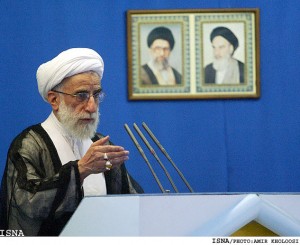
Ayatollah Ahmad Jannati
On 18 February, the hardline cleric, Ayatollah Ahmad Jannati, called for incommunicado imprisonment of the opposition figures in their homes during Friday Prayer sermons. “The Judiciary must completely sever their contact with people. The doors to their homes must be shut. Their comings and goings must become limited. They must no longer be able to send and receive messages. Their telephones and internet must be cut off and they must become prisoners inside their homes,” Jannati emphasized.
What Ayatollah Jannati stated was a clear definition of “house arrest,” which according to existing evidence, the ruling elite of the Islamic Republic of Iran had partially implemented for Mousavi and Karroubi between 27 December 2009 and 14 February 2011.
The Mousavi and Karroubi families issued a joint statement on 27 February 2011, reporting that Mir Hossein Mousavi, Mehdi Karroubi, Zahra Rahnavard, and Fatemeh Karroubi had been transferred from their homes to an unknown location. Kaleme website reported on 28 February of “Mousavi and Karroubi’s transfer to Heshmatieh Detention Center.”
On 28 February 2011, Gholamhossein Mohseni Ejei, the Judiciary spokesperson and the country’s Prosecutor General said, “About the heads of sedition, after ultimatums were issued, in the first step their communications, including [their] comings and goings and telephone and non-telephone communication have been restricted. If need be, new steps will be taken, too, and they are currently living under restrictions.” (Mohseni Ejei press conference, 28 February 2011, ISNA )
Mohseni Ejei did not refer to the detention location of Mir Hossein Mousavi. On 2 March 2011, the Tehran Prosecutor, Abbas Jafari Dolatabadi, said “interrogations of Mousavi and Karroubi are lies,” and when asked about the house arrest of Mousavi and Karroubi, he told the reporters not to use words such as “house arrest,” saying “these interpretations could be misconstrued. Messrs. Karroubi and Mousavi and their wives are in their homes,” he claimed (Link to ISNA Source).
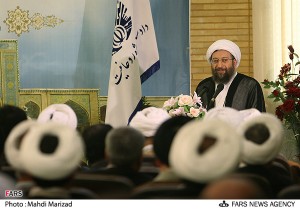
Sadeq Larijani
But hours later, Mohseni Ejei commented for the third time about this matter, and told ISNA that Mousavi and Karroubi “are in their homes but communication limitations have been created for them.” Kayhan Newspaper, in its 3 March 2011 issue, explicitly reported that Mir Hossein Mousavi and Mehdi Karroubi were under the authority of security organizations.
Kayhan, which is infamous for its close ties with intelligence and security circles, announced that “the house arrest of Mousavi and Karroubi started approximately 15 days ago,” and wrote that “security sources told Kayhan on Tuesday that Mousavi and Karroubi are in their homes and their communications, especially the communications that were established with them from abroad, have been cut off.” Kayhan emphasized that “security sources have made Mousavi and Karroubi’s meetings with their ‘first-degree relatives’ conditional, saying that Mousavi and Karroubi will only be allowed “to meet with their first-degree relatives under the condition” that they do not “use this to engage in publication of lies and tension-creating contents.” (Source: Kayhan, Wednesday 2 March, page 2, “Behind the scenes gossip about the transfer of heads of sedition to Prison”)
Threats against Mir Hossein Mousavi and Mehdi Karroubi
According to what the Judiciary Head Sadegh Larijani said previously, the new crackdown on Mir Hossein Mousavi and Mehdi Karroubi was directly ordered by Ayatollah Khomeini. During a speech on 9 February 2011, while he was in Hormozgan Province, he referred to Mousavi and Karroubi as “heads of sedition,” and said: “Regarding the heads of sedition, the issue is the regime’s best interest and deciding about it is not only upon me. The regime’s best interest is decided by the Supreme Leader (Vali-e Fagheeh,) and this supersedes decisions made by the judicial system. (Source: A collection of statements made by the Judiciary Head during the second day of his trip to Hormozgan, 9 February 2011, ISNA News Agency)
On the same day, the Judiciary chief said: “… arrest of the heads of sedition can be easily implemented by the Judiciary, but it is dependent on the regime’s expediency, and in due time this deed will be done.” (Source: A collection of statements made by the Judiciary Head during the second day of his trip to Hormozgan, 9 February 2011, ISNA News Agency)
During recent weeks a number of people affiliated within the ruling clique have made explicit threats on the lives of Mir Hossein Mousavi and Mehdi Karroubi. During an interview with a radio station affiliated with Iran’s state broadcasting, Ali Karimi Firoozjaei, current MP from Babol and a supporter of Ahmadinejad’s government, referred to the leaders of the post-election protests as “heads of sedition,” saying, “If the heads of sedition do not repent, they won’t have security.” (Source: Radio Dialogue, affiliated with the Islamic Republic of Iran Broadcasting, “Parliament representative: if the heads of sedition do not repent they won’t have security”)
At a press conference on Sunday, 13 February 2011 at the Boushehr Cyber Jihad Conference, Hamidreza Moghadamfar, Director of the Fars News Agency, affiliated with the Iranian Revolutionary Guards, explicitly threatened the Green Movement’s leaders and said, “We are concerned that what happened to the third Caliph when he was killed at his home may be repeated for the heads of sedition.” Justifying the threat against the safety of the heads of the Green Movement, he stated it is possible “that the same thing that happened to the third Caliph and Uthman, where Uthman was killed in his house and his bloody shirt was used as pretext of war and the subsequent debates, it might be repeated for the heads of the sedition in their houses.”
Fars News Agency also said that “the Islamic Republic has provided a good protection team for Khatami, and Karroubi, and Mousavi until the time of their trials and the execution of divine rule in their case.” (Source: Fars News Agency Managing Director remarks to reporters in Bushehr, Persian Gulf Weekly, Bushehr, 13 February 2010)
On 16 February, in an editorial entitled “Trial Within the Framework of Expediency,” Jam-e-Jam Newspaper, affiliated with the Islamic Republic of Iran Broadcasting, published a similar threat against Mousavi and Karroubi. Mehdi Fazaeli, former Director of Fars News Agency and a current Manager of Jam-e-Jam Newspaper, pointed to the need to confront and punish Mir Hossein Mousavi and Mehdi Karroubi, and all whom he called “the heads of sedition,” and stressed that “representatives in the Parliament were calling for the execution of these people.” “Today the heads of sedition are in a way under the protection of the system, and it is not clear what would become of them if their protection is removed by the system.”
Also on Friday, 18 February 2011, Mojtaba Zalnoor, the Supreme Leader’s representative in the Islamic Revolutionary Guards, addressed a gathering of the supporters of Ayatollah Khamenei in Tehran’s Enghelab Square, and called on the judicial authorities, saying, “the people’s patience is at its end and they are asking for the maximum Islamic penalty for the heads of the sedition.” He also threatened that “if the respective officials would not take the necessarily action in this matter, and any of the seditionists would dare to make a challenge in the streets, they will be crushed.” (Source: Jamejam Newspaper, 16 February 2011, editorial, “Trial Within the Framework of Expediency”)
In view of the historical precedent, briefly recounted above, the fate of the four disappeared opposition leaders is cause for serious concerns. Will the security and intelligence agents, holding them in a secret location under incommunicado detention, repeat the same pattern of isolation and psychological and physical torture to coerce the detainees to make false “confessions?” The Campaign believes there is compelling evidence that such scenario may well be unfolding.


